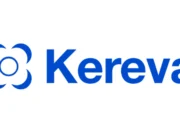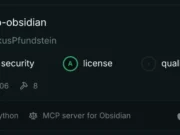Overview
WhatsMyName is a free, community-driven OSINT tool designed to identify where a username exists across hundreds of platforms worldwide. It’s widely used by investigators, brand-protection teams, cybersecurity professionals, and privacy-conscious individuals to map digital footprints, detect impersonation attempts, and assess potential security threats.
What makes WhatsMyName stand out is its combination of speed, broad platform coverage, and open-source transparency. While the tool itself delivers results in seconds, its true power lies in how users interpret, verify, and document those findings, transforming raw data into actionable intelligence that can hold up during audits, legal reviews, or incident response.
The project is maintained by the global OSINT community and is fully open source. Users and contributors can explore the detection methods, JSON structures, and codebase through its official GitHub repository. For direct searches, visit the official web app. Integrating these resources into investigative workflows allows professionals to keep up with rapid platform changes and extend the tool’s capabilities through community updates and integrations with other OSINT frameworks.
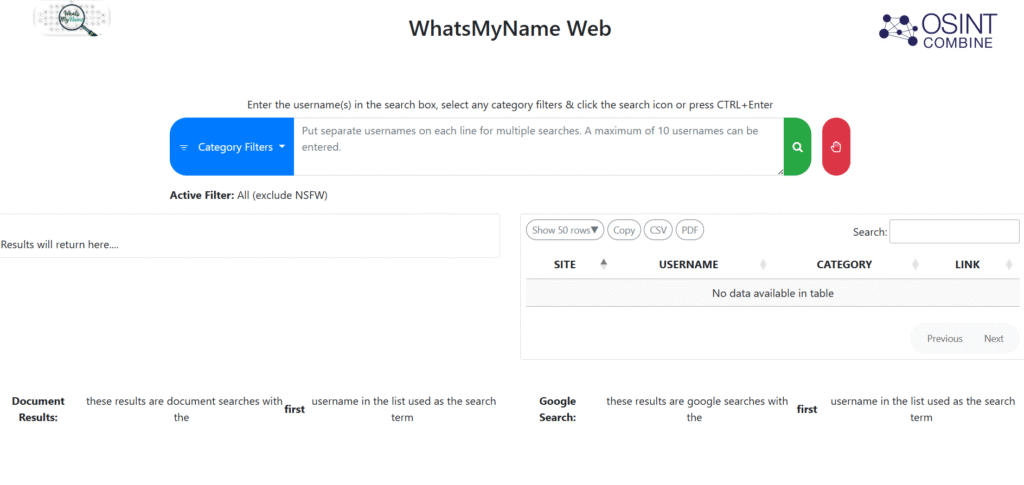
Getting Started
Begin in any modern browser by navigating to the official web app. No registration or extension is required, but ensure JavaScript is enabled and pop-ups are allowed so results open smoothly. Prepare a target handle and a few likely variations, especially if the username is common or you suspect deliberate obfuscation. If you plan to report findings or share them internally, have a spreadsheet application ready for reviewing exports.
Running Your First Search
Enter a single username or a comma-separated set of handles into the main search field. For broad reconnaissance, start with the default settings to scan the full directory of supported platforms. When you need to narrow the scope, use the category filter to focus on specific buckets such as social, business, gaming, developer, or dating networks.
Launch the query and let the app populate a visual panel of hits alongside a detailed results table that includes platform names, profile URLs, and status cues. Repeat the process with obvious variants of the handle, simple changes in separators, numerals, or letter substitutions often surface additional accounts.
Step-by-Step: Your First Search
- Open the site
Visitwhatsmyname.app. No sign-up or extensions required. - Enter username(s)
Type one or more usernames in the main field. For batches, separate by commas (e.g.,john_doe, johndoe, john.doe). - Refine with categories (optional)
Use the Category Filter to focus on platform types such as Social, Business, Gaming, Tech/Developer, Dating, and more. This reduces noise and speeds review. - Run the search
Click the search icon or press Ctrl/⌘+Enter. The left panel shows visual matches; the right panel lists platforms with direct profile URLs and status indicators. - Read the indicators
- Green: confirmed profile found
- Yellow/Amber: profile exists but may be private/inactive
- Gray/Uncertain: ambiguous response > verify manually
- Red/Flagged: suspicious or error > treat with caution
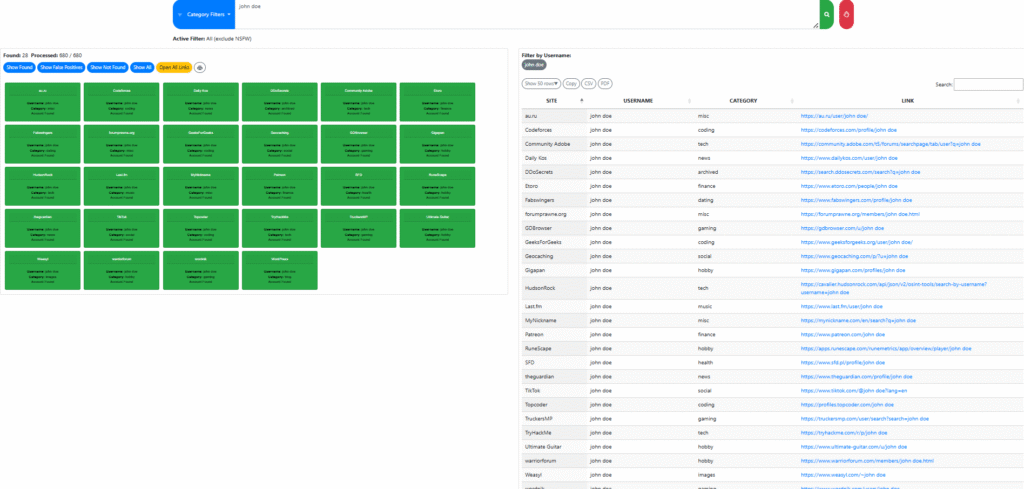
Interpreting Results
Treat each match as a lead rather than a conclusion. A confirmed hit indicates the username exists on a platform, but it does not prove identity. Start by opening the profile link to check whether the page loads, then examine signals such as display name, biography, profile photo, and interaction history. Consistency is your ally: shared images, recurring phrases, and similar posting cadence across multiple services strengthen confidence that the accounts belong to the same person or entity. Ambiguous responses call for patience and corroboration; platform outages, anti-automation countermeasures, or partial privacy settings can all obscure the picture.
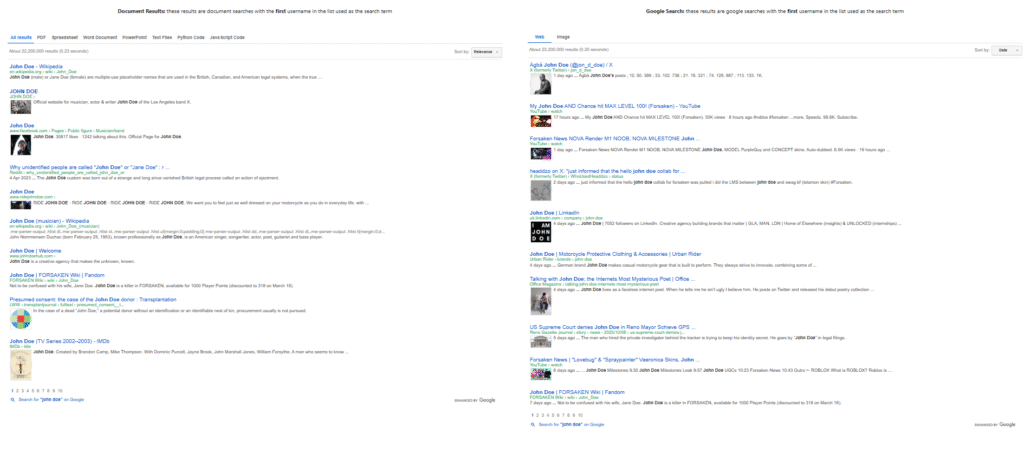
Export & Reporting
Use built-in CSV (for spreadsheets), JSON (for tooling), or URL lists (for takedowns). Keep exports with timestamps and search parameters to preserve audit trails for legal or incident response work.

Verification Workflow (Avoid False Positives)
For each positive hit:
- Open the profile URL and confirm it loads.
- Check completeness (photo, bio, posts).
- Compare details (names, links, photos) against known intel.
- Look for consistency across platforms (language, style, aliases).
- Use reverse-image search for profile pictures.
Log a confidence level (High/Medium/Low) and note any discrepancies.
Practical Use Cases
Security teams rely on WhatsMyName to detect executive impersonation before it escalates, tracking brand terms and product names across mainstream and niche platforms alike. Threat intelligence analysts enumerate aliases to reveal reuse patterns and pivot to adjacent communities. Individuals conduct privacy audits, discovering forgotten accounts and tightening exposure. In each scenario, the combination of broad coverage, rapid scanning, and disciplined verification yields results that can inform takedowns, legal action, or training.
Ethics and Compliance
Use the tool only for legitimate purposes and public information gathering. Comply with local privacy laws, platform terms of service, and internal governance. Keep exports encrypted, share on a need-to-know basis, and follow defined retention schedules. Responsible handling of data is as important as the accuracy of your findings.
Read more: Top OSINT Tools to Find Emails, Usernames and Passwords








